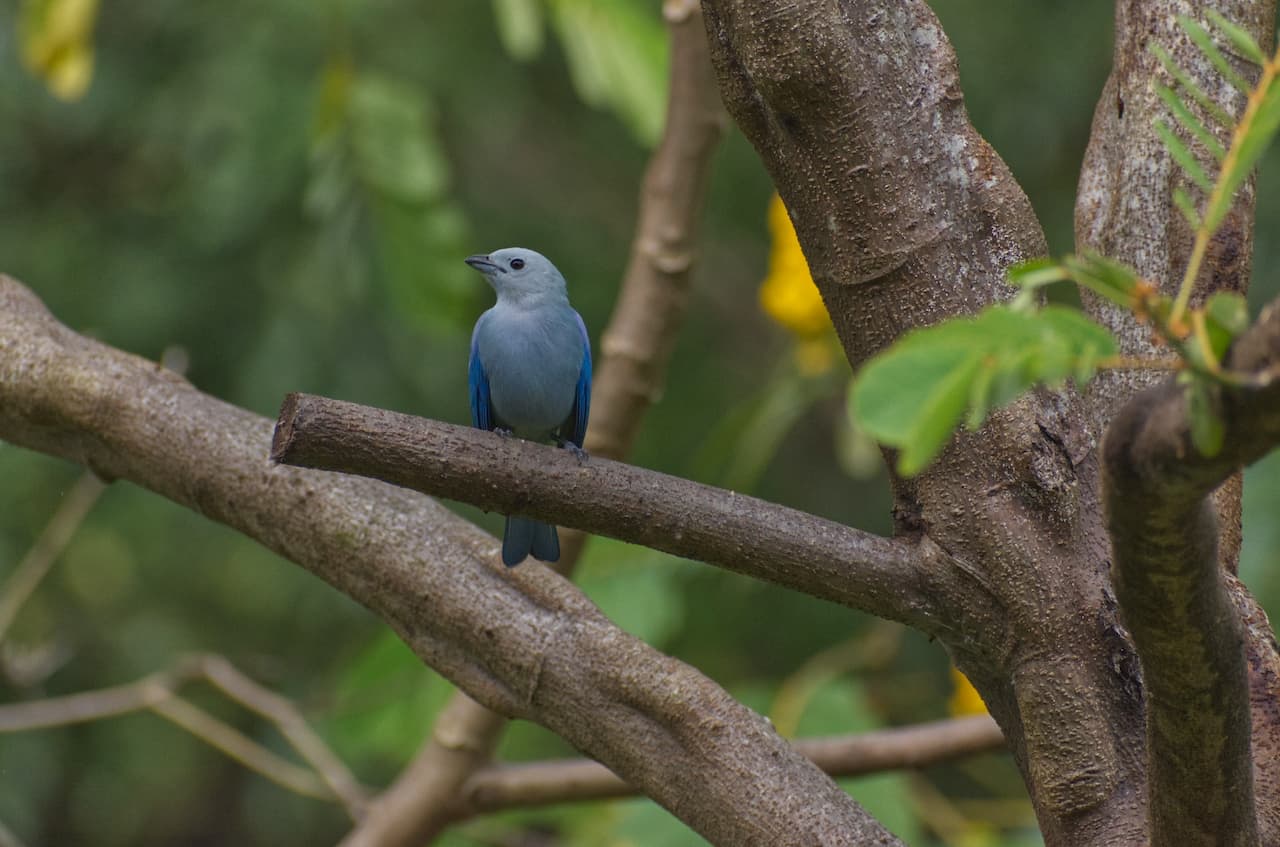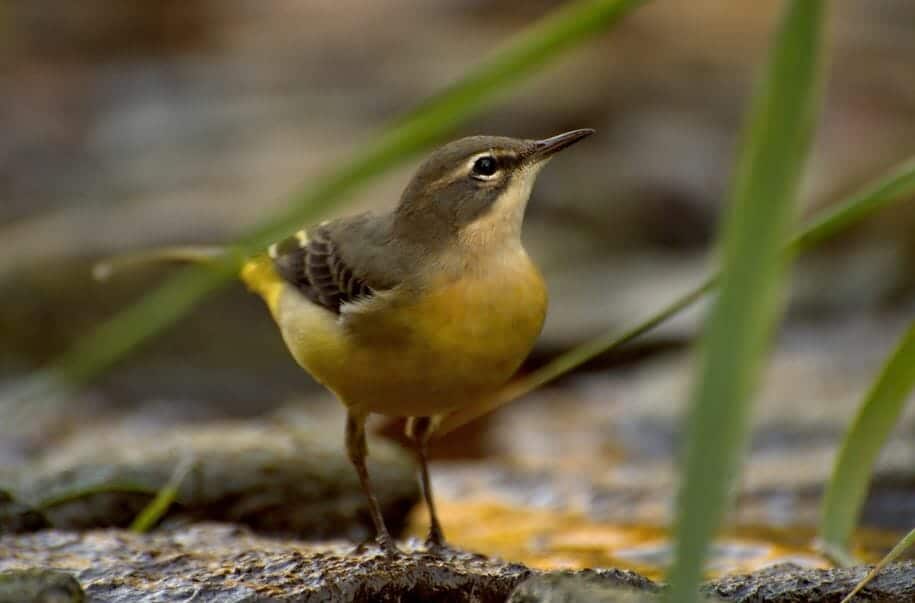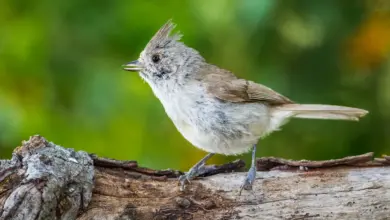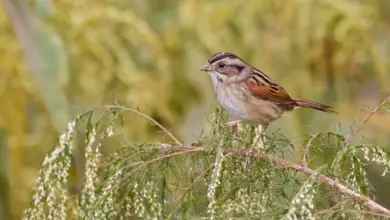Green-tailed Goldenthroat – Hummingbirds
The Green-tailed Goldenthroat (Polytmus theresiae) -also known as Green Goldenthroat – is a South American hummingbird.
Alternate (Global) Names
Spanish: Colibrí de Teresa; Portuguese:
Beija-flor-verde or Beija-flor-dos-tepuis; French: Colibri tout-vert; Italian: Colibrì codadorata codaverde; German: Grünschwanz-Glanzkehlchen; Czech: kolib?ík Thereslin; Danish: Grønhalet Guldstrube; Finnish: viherkultakolibri; Dutch: Groenstaart-goudkeelkolibrie; Norwegian: Grønnkolibri; Polish: koliber zielonosterny; Slovak: jagavicka zelenochvostá; Swedish: Grönstjärtad; uldstrupe; Japanese: himemaruohachidori
Distribution / Range
The Green-tailed Goldenthroat is endemic in the following South American countries: Brazil, Colombia, French Guiana, Guyana, northeastern Peru, Suriname and Venezuela, and possibly Ecuador.
They are usually found along the edges of sandy-belt forests and in savannah with scattered bushes; as well as seasonally wet or flooded lowland grassland, and heavily degraded former forest. In Suriname, they are confined to sandy savanna with open shrubbery. Outside the breeding season, they may wander to the coastal areas.
This species is sedentary throughout its range; however, after the breeding season, some dispersal is possible.

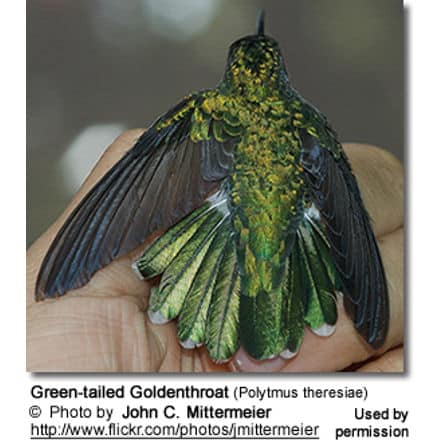
Subspecies and Ranges
-
- Polytmus theresiae theresiae (Da Silva Maia, 1843) – Nominate Race
- Found in the Guianas and northcentral Brazil (Amazonas, Pará, Amapá)
- Polytmus theresiae leucorrhous (P. L. Sclater and Salvin, 1867)
- Found in eastern Colombia and southern Venezuela (Bolívar, Amazonas) to northwestern Brazil (Negro River) and northeastern Peru (Loreto).
- Polytmus theresiae theresiae (Da Silva Maia, 1843) – Nominate Race
Description
The Green-tailed Goldenthroa measures 3.6 to 4 inches (9 to 10 cm) in length. The upper plumage is a coppery-green the male’s plumage below is a pale golden-green, and the female is white below with large spangles of green.
It has a slightly down-curved bill; the upper bill is dark and the lower bill is flesh-colored with a darker tip. It has a small white mark behind each eye.
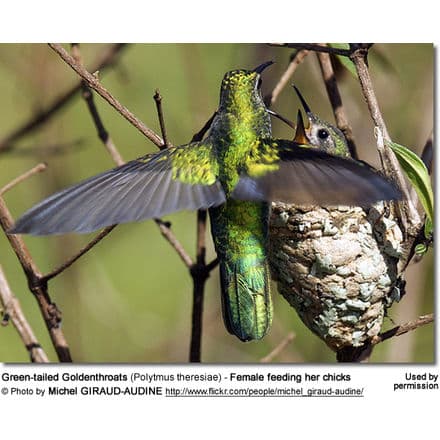

Nesting / Breeding
Hummingbirds in general are solitary and neither live nor migrate in flocks; and there is no pair bond for this species – the male’s only involvement in the reproductive process is the actual mating with the female.
Males court females by flying in a U-shaped pattern in front of them. He will separate from the female immediately after copulation. One male may mate with several females. In all likelihood, the female will also mate with several males. The males do not participate in choosing the nest location, building the nest, or raising the chicks.
The female Green-tailed Goldenthroat is responsible for building an open cup-shaped nest out of plant fibers woven together and green moss on the outside for camouflage in a protected location in a shrub, bush, or tree (up to 6.6 feet or 2 meters above the ground). She lines the nest with soft plant fibers, animal hair, and feathers down, and strengthens the structure with spider webbing and other sticky material, giving it an elastic quality to allow it to stretch to double its size as the chicks grow and need more room. The nest is typically found on a low, thin horizontal branch.
The average clutch consists of 1 – 3 white eggs (mostly 2), which she incubates alone for about 14 to 15 days, while the male defends his territory and the flowers he feeds on.
The young are born blind, immobile, and without any down.
The female alone protects and feeds the chicks with regurgitated food (mostly partially digested insects since nectar is an insufficient source of protein for the growing chicks). The female pushes the food down the chicks’ throats with her long bill directly into their stomachs.
As is the case with other hummingbird species, the chicks are brooded only the first week or two and are left alone even on cooler nights after about 12 days – probably due to the small nest size. The chicks leave the nest when they are about 20 – 25 days old.
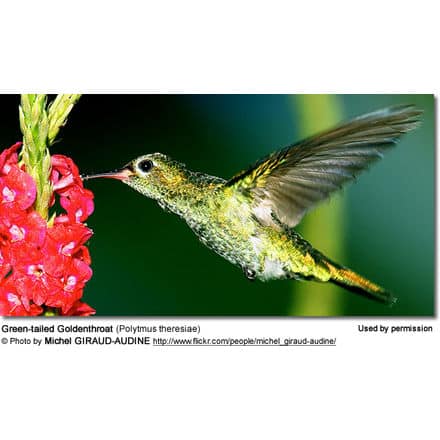

Diet / Feeding
The Green-tailed Goldenthroats primarily feed on nectar taken from a variety of brightly colored, scented small flowers of trees, herbs, shrubs, and epiphytes.
Hummingbird Resources
- Hummingbird Information
- Hummingbird Amazing Facts
- Attracting Hummingbirds to Your Garden
- Hummingbird Species
- Feeding Hummingbirds

